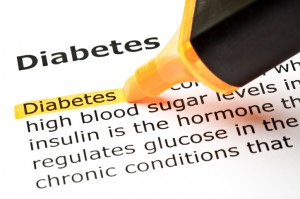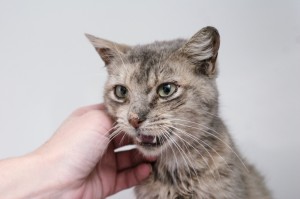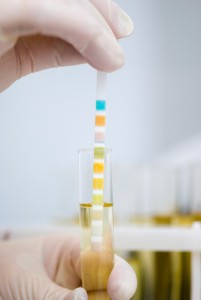In this article, Veterinary Expert Editor, Dr Susie Coughlan, follows on from her previous introduction to diabetes in dogs and looks at the surprisingly common clinical problem of diabetes mellitus in cats.
How common is diabetes in cats?

Diabetes is surprisingly common in cats
Diabetes mellitus is a relatively common problem in cats.
Insulin, produced by specialised cells in the pancreas, passes into the bloodstream and is distributed around the body. Insulin allows the cells of the body tissues to take up glucose (sugar) from the blood and use the glucose as an energy source.
In cats with diabetes, there is a relative or absolute deficiency in insulin. This means that the body cells can’t take up glucose properly. The glucose remains in the blood, so there are high levels of blood glucose (hyperglycaemia).
The body cells try to use other sources of energy as glucose is not available to them. They use fat and protein instead, and this causes the body’s stores of fat and protein to break down. Weight loss follows, and the products formed by the breakdown of these energy sources can accumulate to toxic levels and cause a diabetic crisis (ketoacidosis).
Most diabetic cats combine a resistance to the proper action of insulin in the body cells, with a decrease in the amount of insulin produced by specialised cells in the pancreas. Peripheral resistance to insulin describes the situation where there may be sufficient levels of insulin in the bloodstream, but the body cells cannot use the insulin to take up glucose. This scenario is very similar to that seen in Type II diabetes in humans, which is becoming increasingly common.
Factors that can cause or contribute to increased resistance to insulin include pregnancy, obesity, other hormonal conditions and some drugs (including prednisolone and progestagens). Obesity in cats is increasing and this may be a major factor in increasing an individual cat’s risk of developing this disease.
Signs of diabetes in cats
The most commonly seen clinical signs or symptoms are:-
- Increased thirst
- Increased urination
- Increased hunger
- Weight loss

Cats with diabetes will usually show increased thirst and some weight loss despite being hungry
These signs relate to the high blood sugar (hyperglycaemia) that is present in these patients. The blood sugar (glucose) is so high that glucose is passed out in the urine. Glucose carries water with it, increasing urine production. To prevent dehydration from the large amount of water being lost in the urine, thirst is increased and you may notice that your cat is drinking more water. Weight loss results as the body cannot break down glucose properly so turns to protein and fat instead and tissues break down as the condition progresses.
Sometimes these signs are not all present, and they may not be spotted, depending on the cats’ lifestyle; where it drinks for example and whether it uses a litter try or not.
Cataracts are fairly common in dogs with diabetes but are very rarely seen in cats.
How is diabetes diagnosed in cats?
Diabetes must be differentiated from other conditions that can cause similar signs. Examples of conditions that cause excess drinking in cats include kidney disease, overactive thyroid gland, cancer, and other hormonal conditions.

A simple urine dipstick test can check for the presence of glucose in your cats urine if diabetes is suspected.
For this reason your vet may recommend more than one sample, and also that you collect or test a urine sample with a diagnostic stick on a sample passed at home, where your cat should not be stressed.
Most undiagnosed diabetic cats are fairly well although they are showing some or all of the clinical signs described. However a diabetic crisis (ketoacidosis as described above), is always a potential complication in any diabetic animal whose condition is not being adequately controlled. A cat having a diabetic crisis will be very unwell, often dull and depressed with vomiting, diarrhoea, and no appetite. If untreated, the cat may go into a coma and die.
If you see these signs in your cat, whether it is a diabetic under treatment or not, you must call your vet immediately.
Treatment of diabetic cats
Treatment of cats diagnosed with diabetes comprises detection of any contributing factors or conditions, dietary and lifestyle modification and usually insulin supplementation by injection.
 The Veterinary Expert| Pet Health
The veterinary expert provides information about important conditions of dogs and cats such as arthrits, hip dysplasia, cruciate disease, diabetes, epilepsy and fits.
The Veterinary Expert| Pet Health
The veterinary expert provides information about important conditions of dogs and cats such as arthrits, hip dysplasia, cruciate disease, diabetes, epilepsy and fits.
 The Veterinary Expert| Pet Health
The veterinary expert provides information about important conditions of dogs and cats such as arthrits, hip dysplasia, cruciate disease, diabetes, epilepsy and fits.
The Veterinary Expert| Pet Health
The veterinary expert provides information about important conditions of dogs and cats such as arthrits, hip dysplasia, cruciate disease, diabetes, epilepsy and fits.